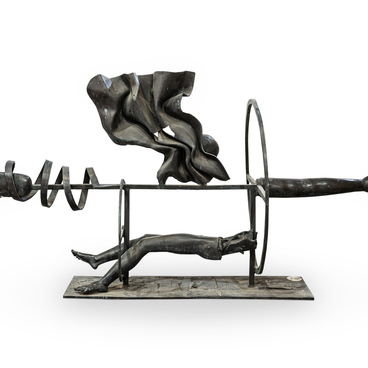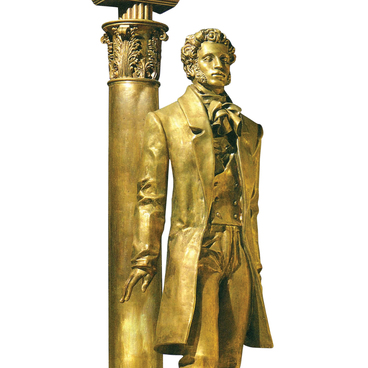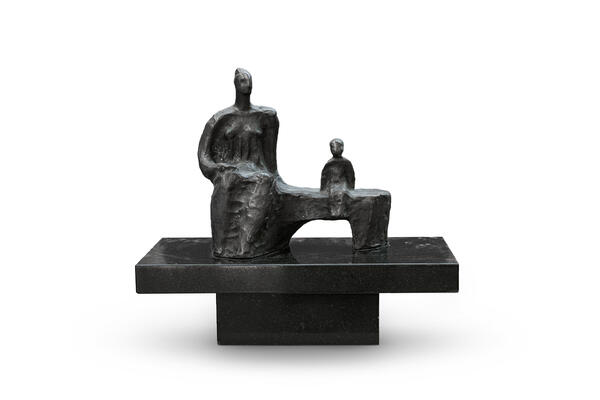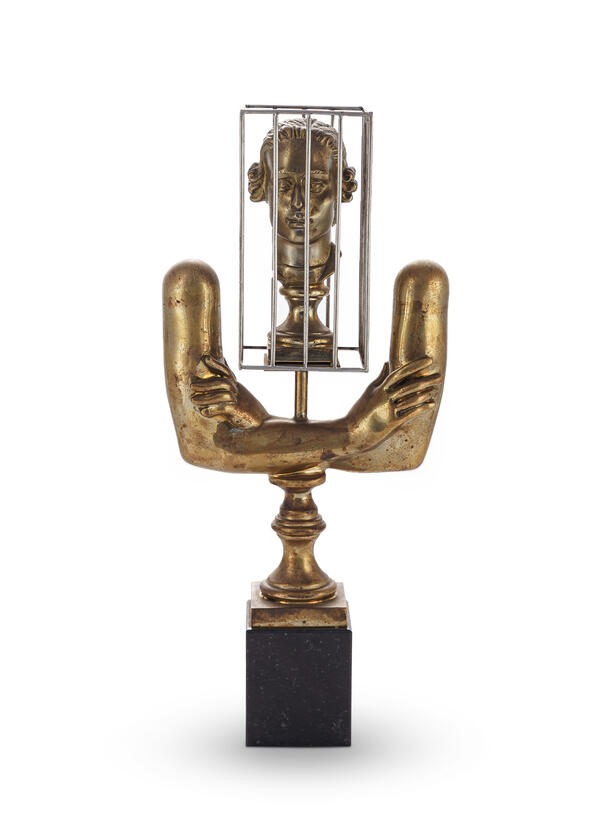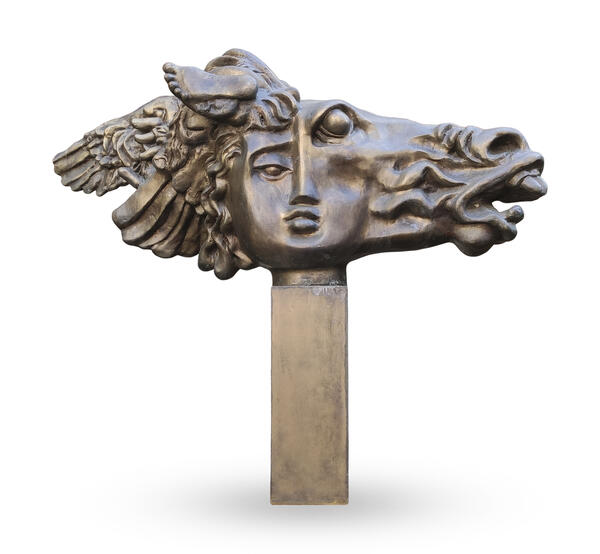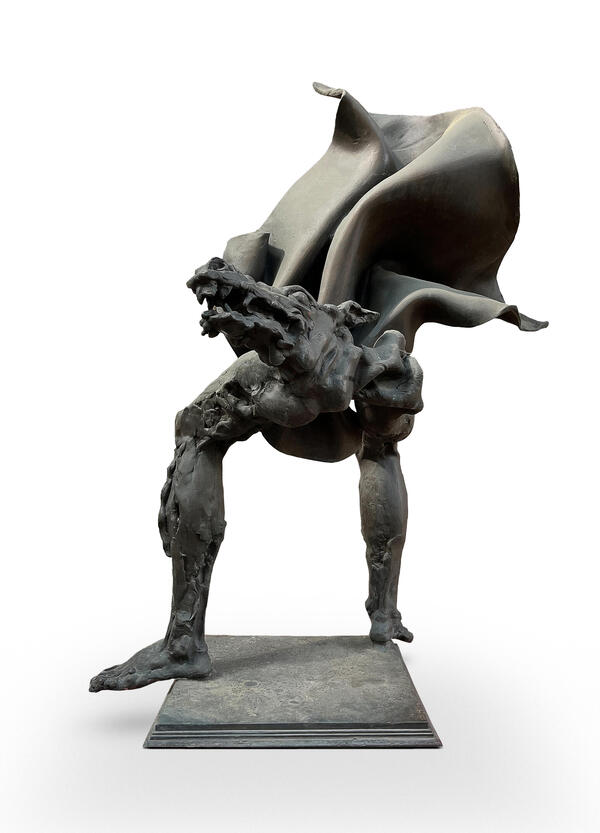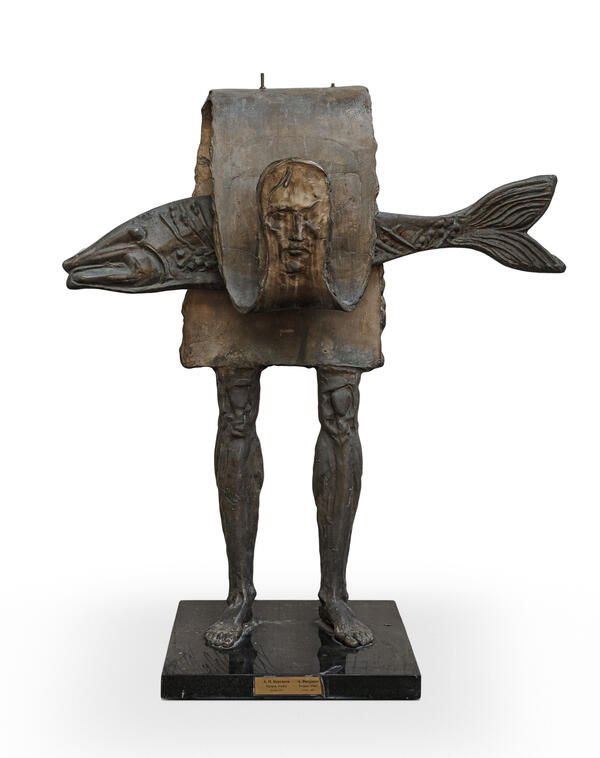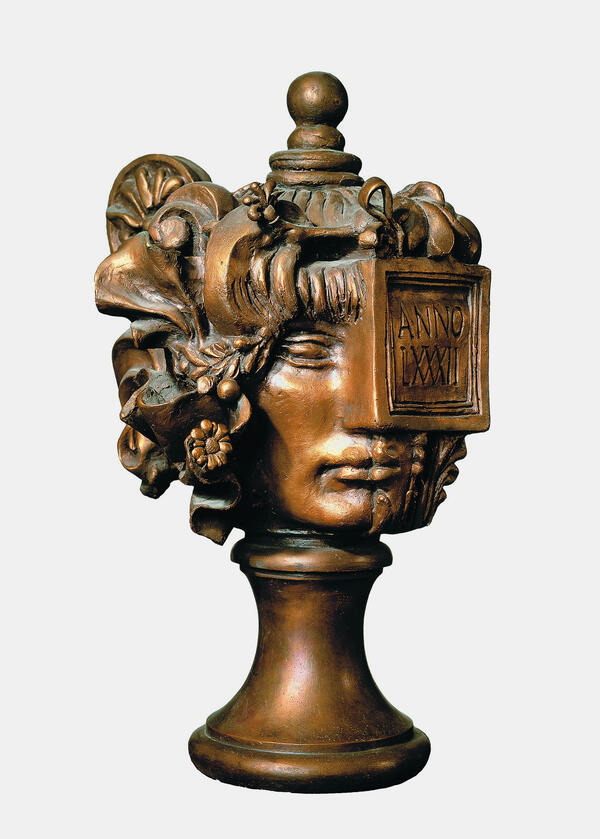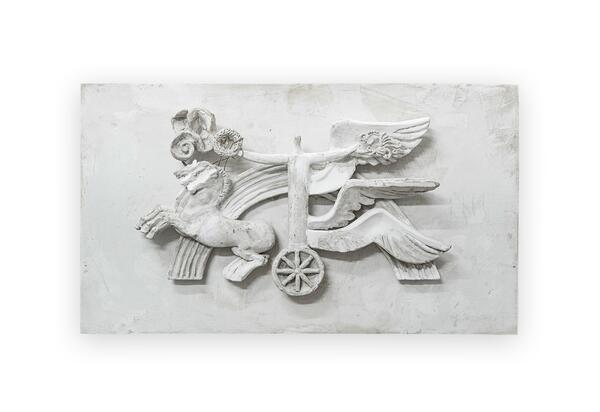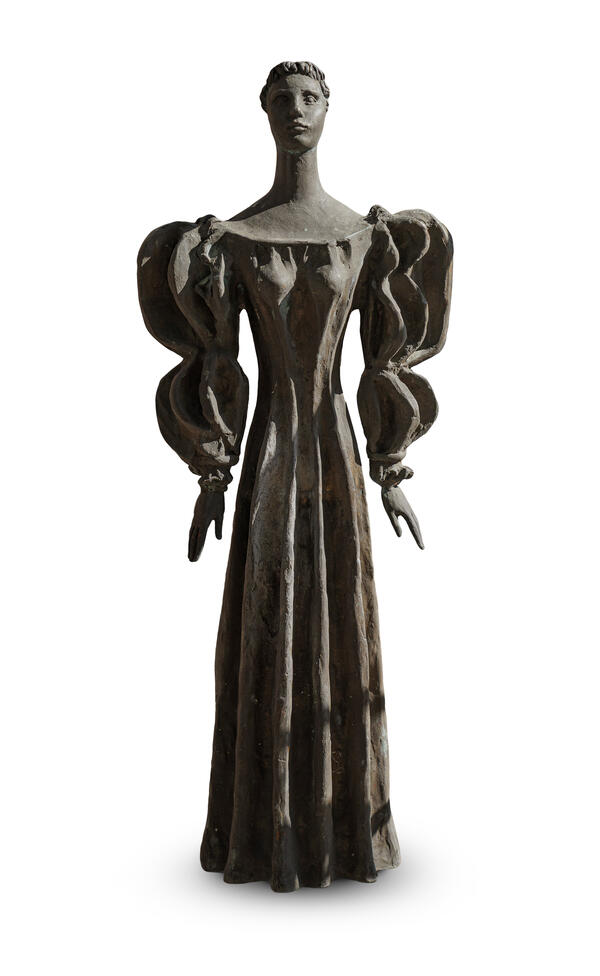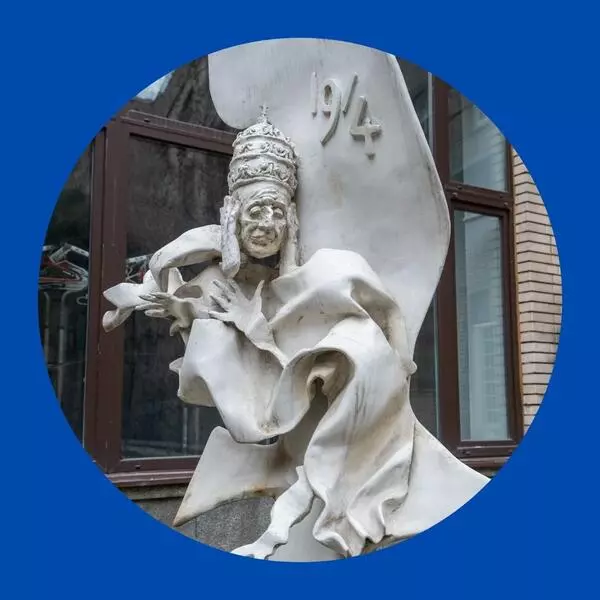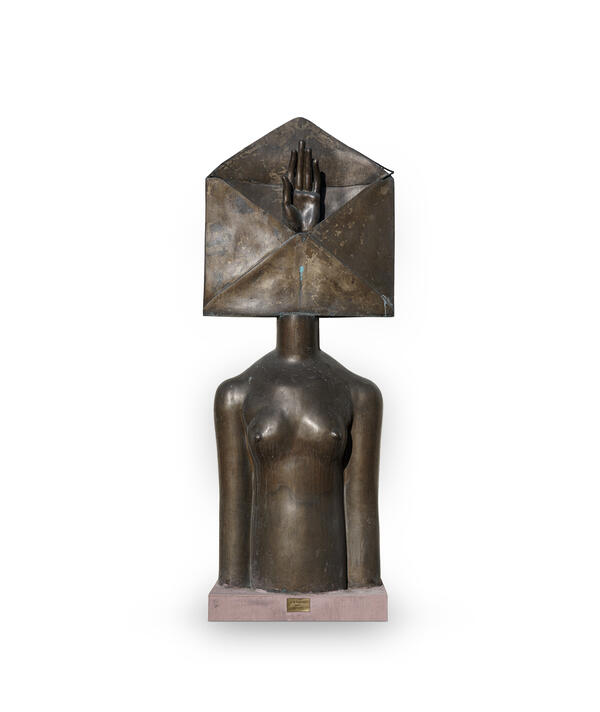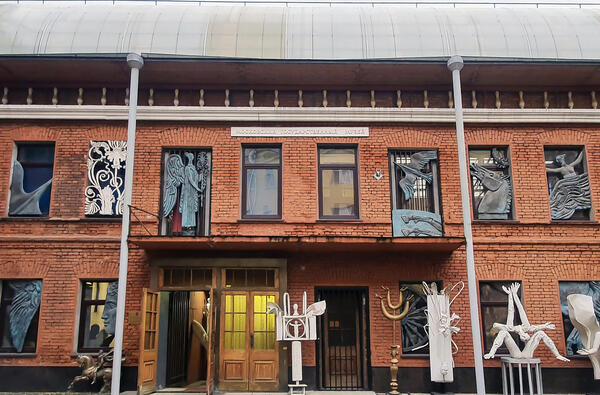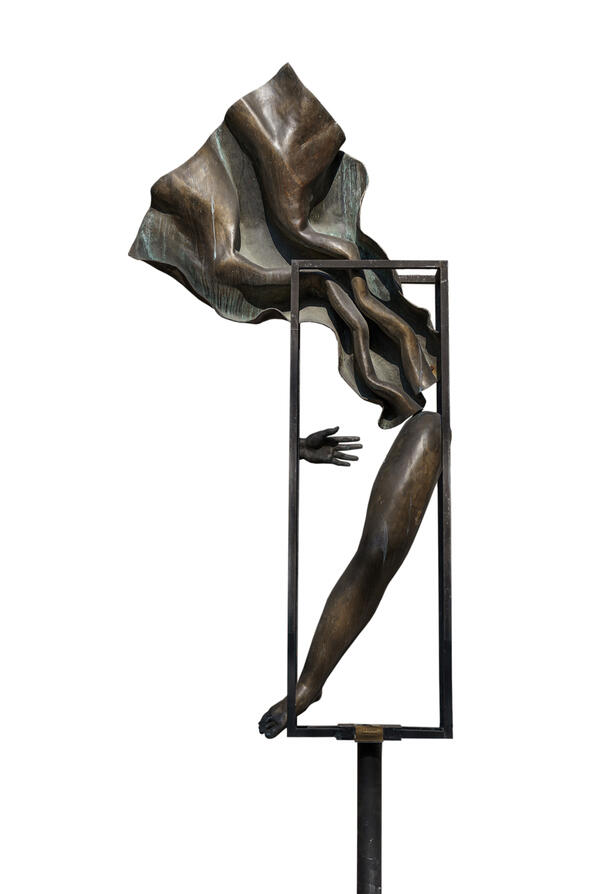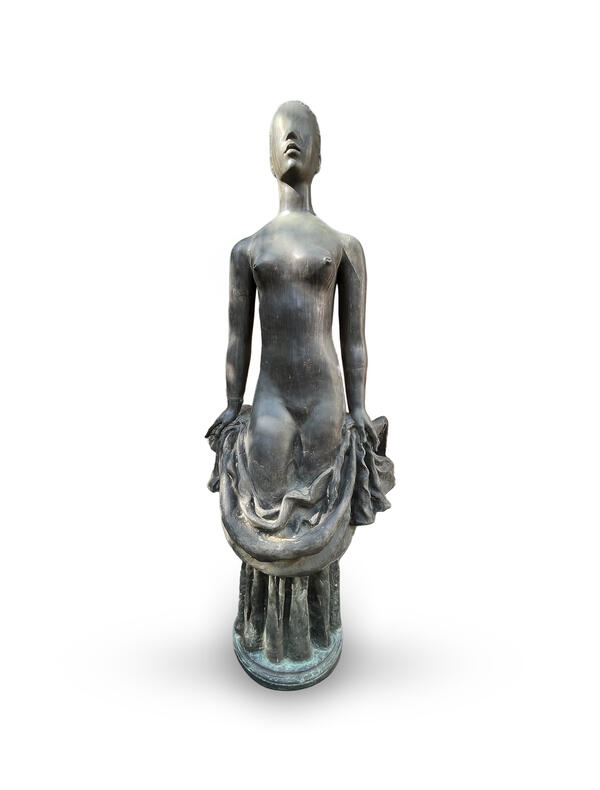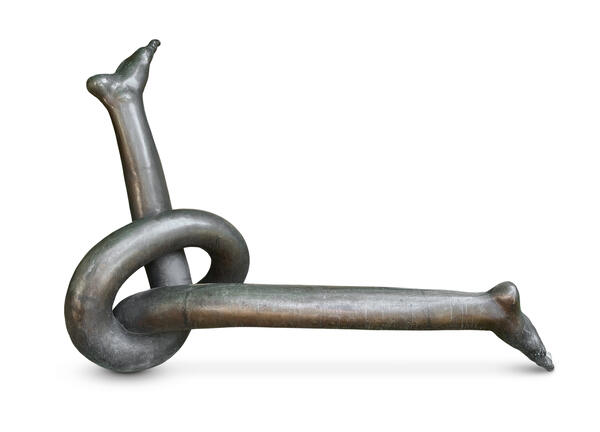This sculptural portrait of an oil worker depicts a young man with his arm bent at a right angle over his head, supporting an industrial structure. This work reflects a significant period in the artist’s career.
In 1976, Alexander Burganov went on a creative trip to the small industrial town of Schwedt, East Germany. The town’s main enterprise was an oil refinery that was built by the German Democratic Republic (GDR) with the assistance of the Soviet Union in 1958–1964. It was connected to the Russian Druzhba oil pipeline network. In Schwedt, the sculptor accompanied a team of refinery employees and designed images that depicted modern workers. Upon his return to Moscow, Alexander Burganov used his sketches to create a series of works, organized an exhibition, and published an article “My Brigade” in the 10th issue of the Iskusstvo (Art) magazine in 1978.
The displayed sculpture was one of the works created after the sculptor’s creative trip. In this piece, Alexander Burganov combined elements of portrait and landscape and created a striking image of a young oil worker. He has an open face and curly hair. He holds his right arm over his head as if he were lying on the grass during a short break at work, gazing at the sky.
Factory pipes are visible in the background. The sculptor created an austere and minimalist scene, transferring all elements from the horizontal to the vertical plane. The worker gazes not at the clouds but directly at the viewer. The oil derrick rests on the worker’s forearm which is perfectly horizontal and forms the base of the plant. This artwork interprets a human being as a literal foundation of the industrial landscape.
The sculptor emphasized the theme of the industrial landscape in both the composition and the title of the artwork, placing the “Heroic Landscape” at the beginning and then adding the precise location — “Oil Refinery in Schwedt/Oder”.
The artwork stands out for its expressive dynamics, decorative nature, and
powerful sculptural techniques. The sculpture “Heroic Landscape” continues the
traditions of the austere style that originated in the early 1960s. Its main
character is not a triumphant hero but a creator who has taken responsibility
for the future.

